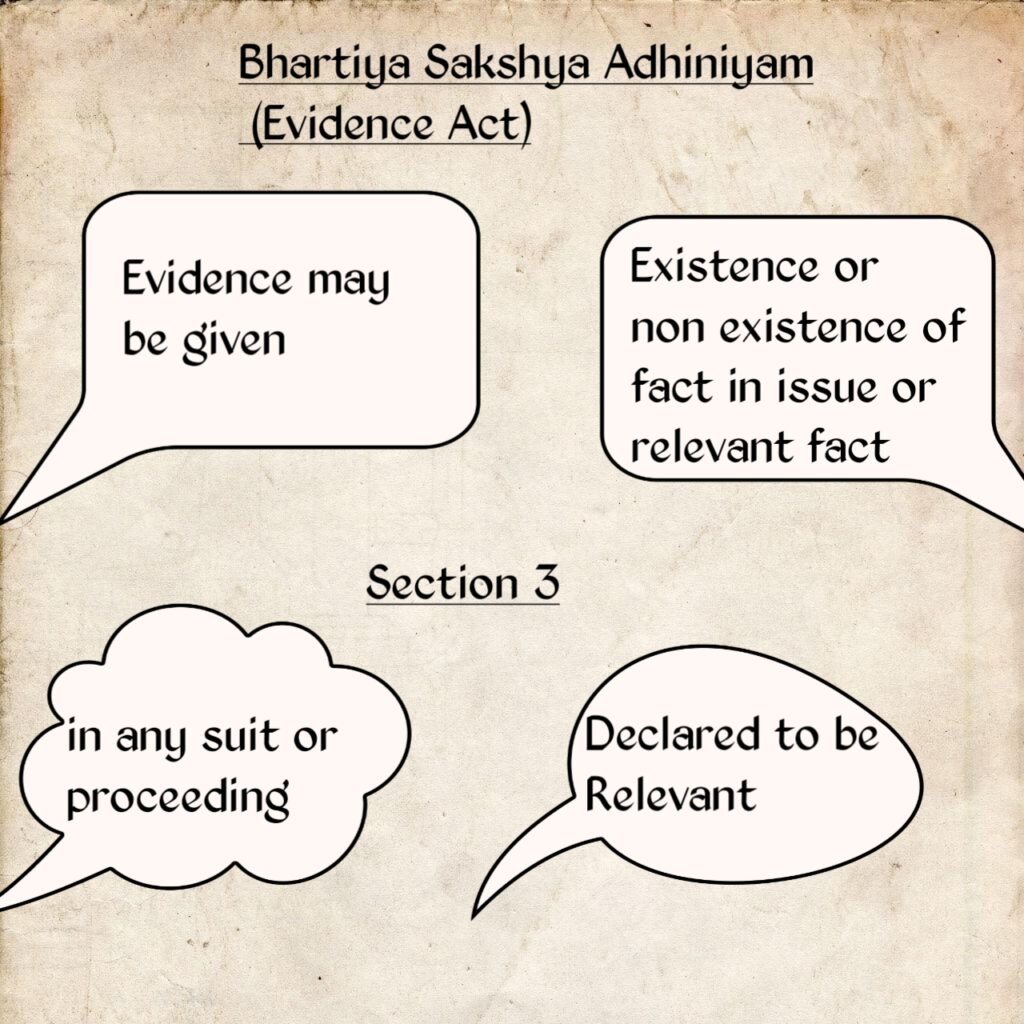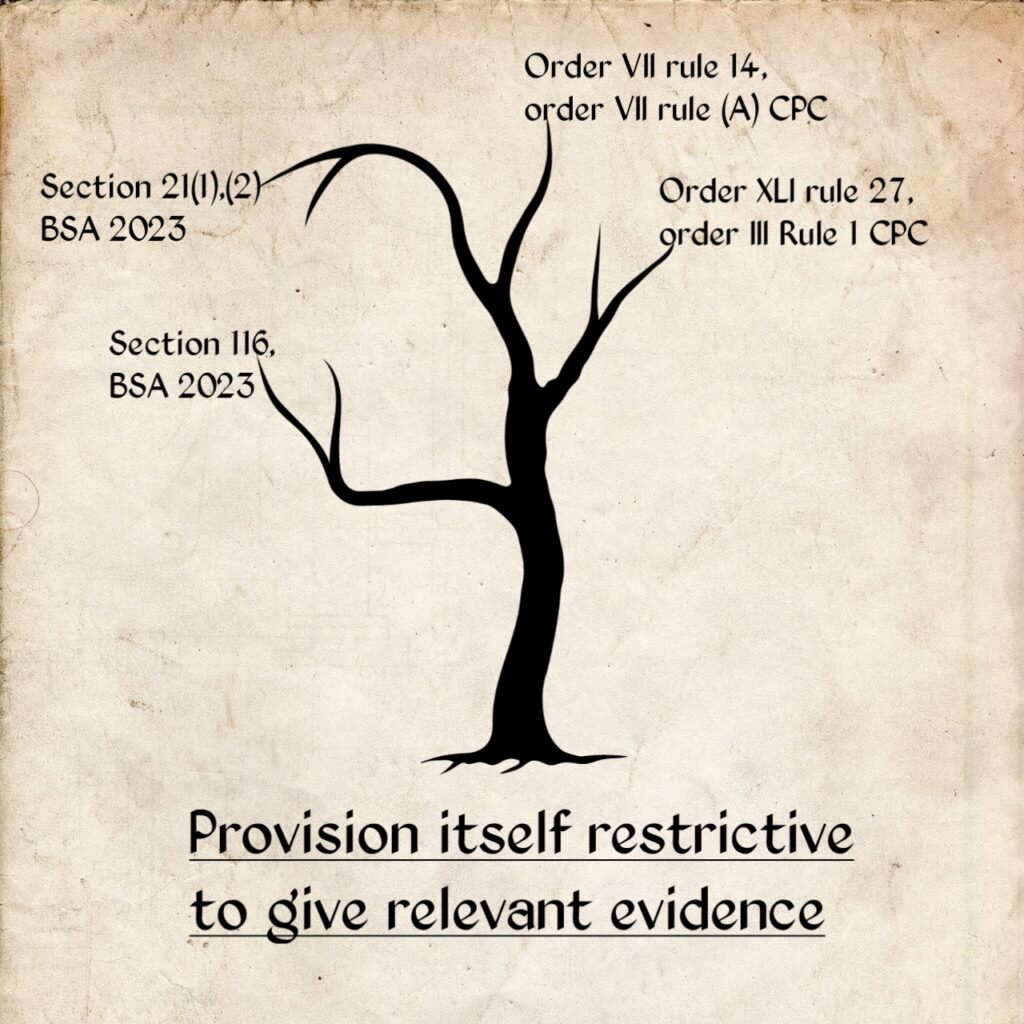Evidence may be given of the facts in issue and relevant facts
Section 3 Bhartiya Sakshya Adhiniyam 2023 bare Act
Previously this section in Indian Evidence Act 1872 was section 5 and now it’s became section 3 in Bhartiya Sakshya Adhiniyam 2023.
The main purpose of this section is to limit the scope of evidence. Means no other evidence ,declared to be relevant other than fact in issue or relevant fact.
This section shall not enable any person to give evidence of a fact which he is disentitled to prove by any provision of the law for the time being in force relating to Civil Procedure.
Fact in issue
According to section 2 (g) of Bharatiya Sakshya Adhiniyam facts in issue means
- Any fact from which either by itself or in connection with other facts,
- Existence non existence,
- Nature or extent of any right,
- Liability or disability,
- Asserted or denied in any suit proceeding, necessarily follows.
Relevant fact
As per section 2 (k) of Bhartiya sakshya adhiniyam
- A fact is said to be relevant to another
- When it is connected with the other in any of the ways
- Referred to in the provisions of this adhiniyam relating to the relevancy of the facts.
Bhartiya Sakshya Adhiniyam section 3
This section relates to evidence given of facts in issue and relevant fact.

It seems to provide evidence may be given in any suit or proceeding of the existence are non existence of every fact in issue and of such other facts declared to be relevant.
And of no others. It further explains that this section not enable any person to give evidence of fact which is disentitled to prove relating to Civil Procedure.
- This section of Bhartiya Sakshya Adhiniyam section 3 as enabling or restrict of the fact in issue or relevant fact.
- It is substantive nature ( essential part of things) as it gives subject.
In one hand it enable to produce evidence or fact in issue and relevant fact, on the other hand it restrict producing of irrelevant facts.
It clearly declares that evidence may be given by the party of fact in issue and relevant fact and no other.
Thus this section is enabling as well as restrictive in nature, as it enable parties to give evidence of any relevant fact or fact in issue.
Provision itself restrictive to give relevant fact, evidence

There are some provision in Bhartiya Sakshya Adhiniyam itself for example Section 21 (1 )and (2) and section 116 where in even if any fact is relevant evidence is not allowed to prove.
Where in CPC order VII rule 14, order VII rule (A), order XLI rule 27, order III Rule 1 Where in evidence will not be allowed to be proved for fact in issue or relevant fact.
Thus despite the related provision evidence will not be allowed to be proved in certain cases the section is also restrictive.
There the party is allowed to prove the evidence, in order to impeach the credit of witness under section 158 of Bhartiya sakshya adhiniyam.
Even though the credit of witness is not directly a fact in issue or relevant fact.
Section 21 of Bhartiya Sakshya Adhiniyam
Admission in civil cases when relevant
- It provides that in civil cases no admission is relevant
- If it is made either upon an Express condition that evidence of it is not to be given
- Or under circumstances from which the court can infer that the parties agreed together that evidence of it should not be given.
Bhartiya Sakshya Adhiniyam section 116
Birth during marriage conclusive proof of legitimacy
- It provides that the fact that any person was born during the continuance of a valid marriage between his mother and any man
- Or within 280 days after it’s dissolution of marriage
- When the mother remaining unmarried
- It Shall be conclusive proof that he is the legitimate child of that man unless.
- Unless it can be shown that the parties to the marriage had no access to each other at any time when he could have been begotten.

